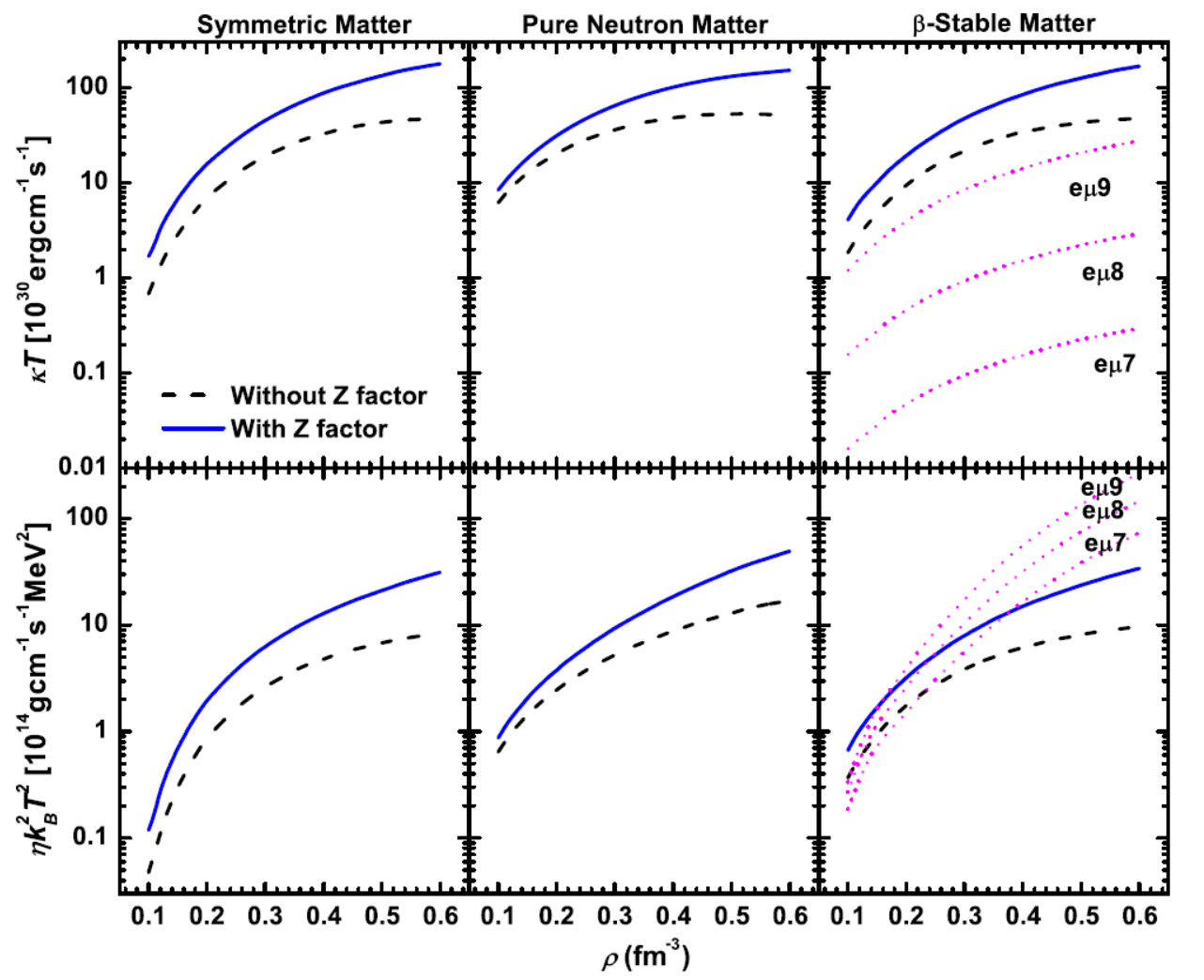
As a class of compact objects, neutron stars (NSs) contain extreme neutron-rich matter at supranuclear density in their interiors. And a rapidly rotating NS is regarded as a gravitational wave source due to the r-mode instability. Thus the reliable knowledge about transport coefficients of dense matter is crucial in pulsar physics. The thermal conductivity and the shear viscosity are two transport coefficients that can help us understand the stellar thermal evolution and the r-mode instability.
Researchers at the Institute of Modern Physics (IMP) of the Chinese Academy of Sciences (CAS) have recently clarified the role of the nucleon-nucleon correlation in the thermal conductivity and shear viscosity in the Abrikosov and Khalatnikov (AK) framework.
They calculated the Z-factor (measure the nucleon correlation) at Fermi surfaces, the in-medium cross sections, nucleon effective masses, and the equation of state of NS matter by using the Brueckner theory with the two-body AV18 interaction plus microscopic three-body force.
Results show that the two transport coefficients are enhanced by several times for symmetric matter, pure neutron matter, and β-stable matter once the nucleon correlation is included. The nucleonic thermal conductivity is much more important than lepton ones for different densities and temperatures, whether or not the nucleon correlation is included.
Moreover, as the temperature decreases, the nucleon shear viscosity becomes more and more important with respect to the lepton contribution. If the nucleon correlation is taken into account, the nucleon shear viscosity may become comparable with the lepton ones at intermediate densities, and larger than lepton ones at low densities.
However, contrary to the role of nucleon correlation itself, neutron superfluidity is able to reduce the shear viscosity significantly (by several orders of magnitude) once the temperature drops below the critical temperature. As a result, the lepton scattering still contributes more to the the shear viscosity than the nucleon scattering at low temperature for the densities of interest in superfluid matter.
According to the study, the researchers found that the shear viscosity cannot stabilize canonical NSs against r-mode oscillations even at quite low temperatures (106K). The study stretches understanding of the r-mode instability of pulsar physics.
This work was supported by the National Natural Science Foundation of China, the Strategic Priority Research Program of CAS, the Youth Innovation Promotion Association of CAS, the Continuous Basic Scientific Research Project, the Leading Innovation Project, and the Continuous Basic Scientific Research Project.

Fig.1. Thermal conductivity (upper panel) and shear viscosity (lower panel) of nucleons and leptons as a function of density in symmetric matter, pure neutron matter, and β-stable matter. The nucleonic thermal conductivity and shear viscosity are calculated with the help of BHF approach without and with the inclusion of Z-factors. (Image by SHANG Xinle and DONG Jianmin)

86-10-68597521 (day)
86-10-68597289 (night)

86-10-68511095 (day)
86-10-68512458 (night)

cas_en@cas.cn

52 Sanlihe Rd., Xicheng District,
Beijing, China (100864)

